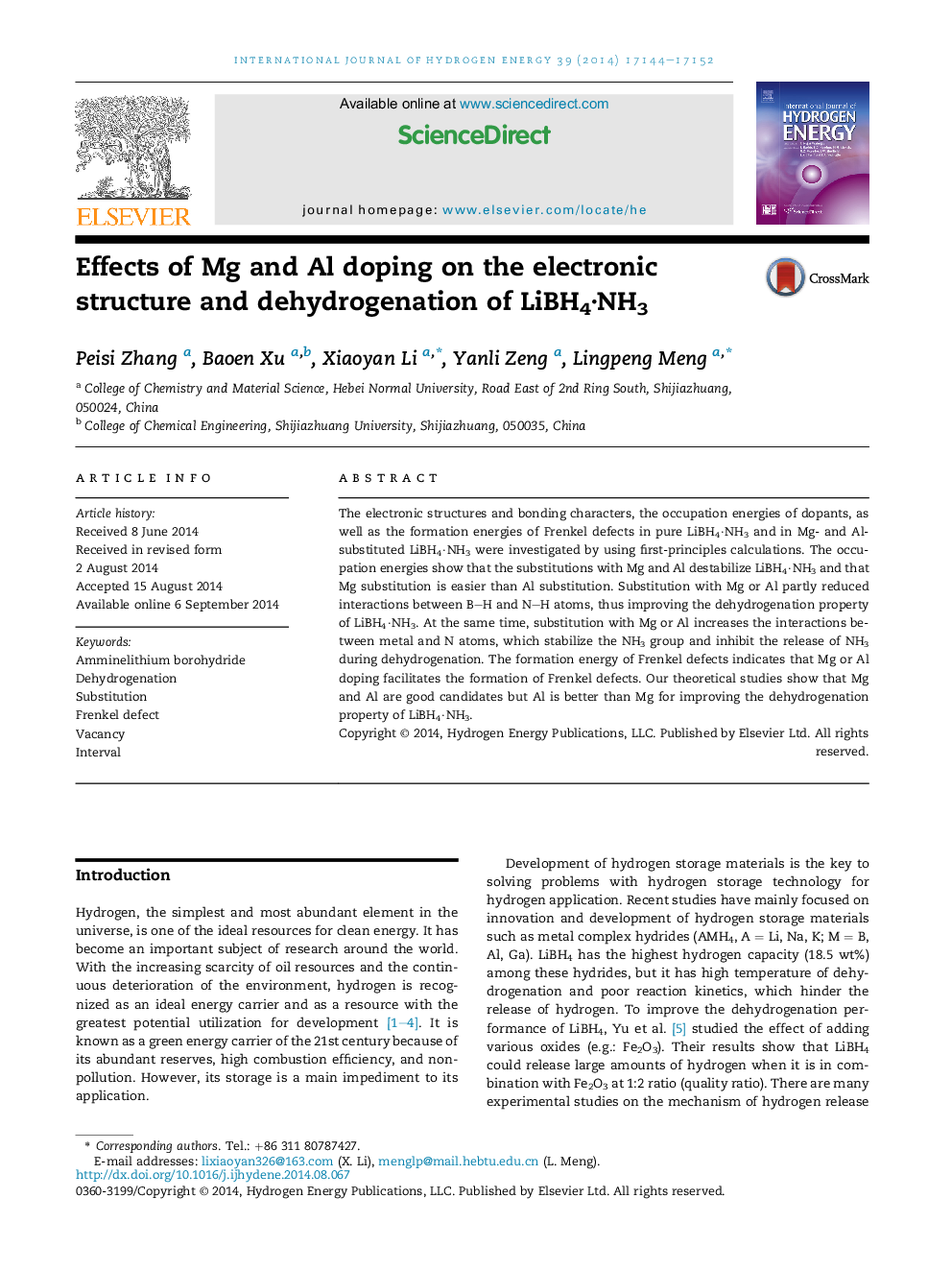| Article ID | Journal | Published Year | Pages | File Type |
|---|---|---|---|---|
| 1272170 | International Journal of Hydrogen Energy | 2014 | 9 Pages |
•Mg/Al substitution improves the dehydrogenation property of LiBH4·NH3.•Mg or Al doping facilitates the formation of Frenkel defects.•Al is better than Mg for improving the dehydrogenation property of LiBH4·NH3.
The electronic structures and bonding characters, the occupation energies of dopants, as well as the formation energies of Frenkel defects in pure LiBH4·NH3 and in Mg- and Al-substituted LiBH4·NH3 were investigated by using first-principles calculations. The occupation energies show that the substitutions with Mg and Al destabilize LiBH4·NH3 and that Mg substitution is easier than Al substitution. Substitution with Mg or Al partly reduced interactions between B–H and N–H atoms, thus improving the dehydrogenation property of LiBH4·NH3. At the same time, substitution with Mg or Al increases the interactions between metal and N atoms, which stabilize the NH3 group and inhibit the release of NH3 during dehydrogenation. The formation energy of Frenkel defects indicates that Mg or Al doping facilitates the formation of Frenkel defects. Our theoretical studies show that Mg and Al are good candidates but Al is better than Mg for improving the dehydrogenation property of LiBH4·NH3.
Graphical abstractThe influences of Mg and Al dopants on the dehydrogenation properties of LiBH4·NH3 are investigated using the first-principles calculations. Mg and Al are good candidates but Al is better than Mg for improving the dehydrogenation property of LiBH4·NH3.Figure optionsDownload full-size imageDownload as PowerPoint slide
